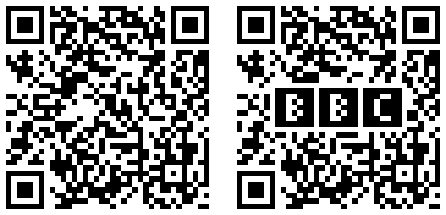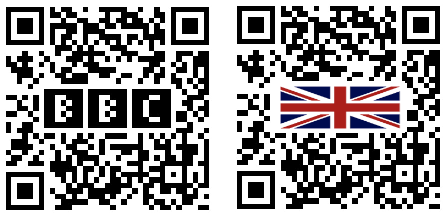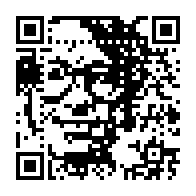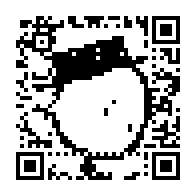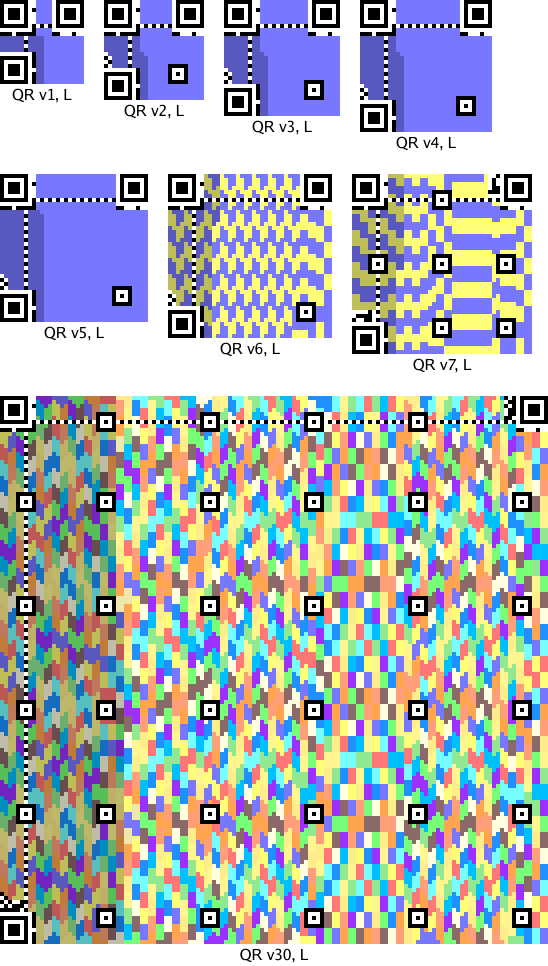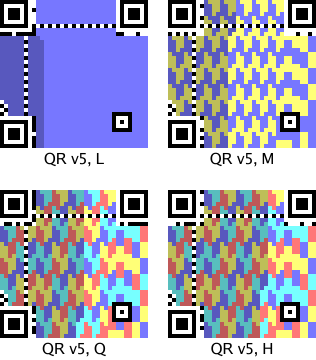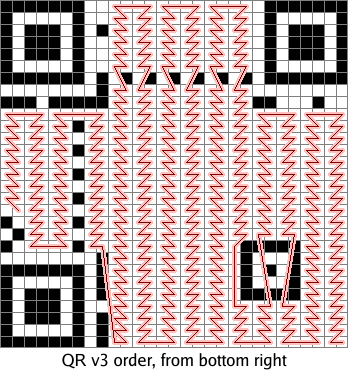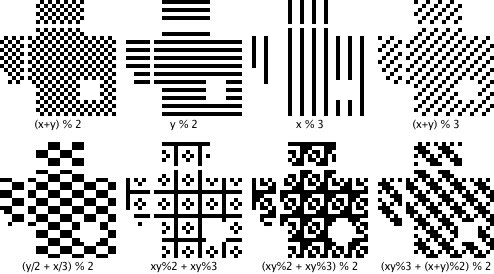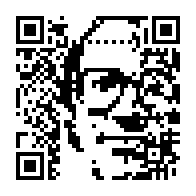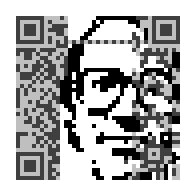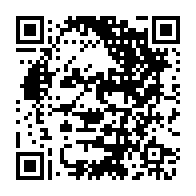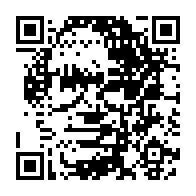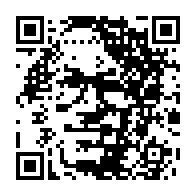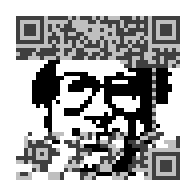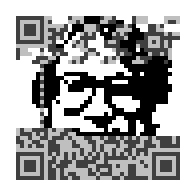Description
The following is a list of primitive irreducible polynomials for generating elements of a binary extension field GF(2m) from a base finite field. The list contains polynomials of degree 2 to 32.
Downloads
 primitive_polynomials_GF2.txt
primitive_polynomials_GF2.txt
 primitive_polynomials_GF2_extended.zip
primitive_polynomials_GF2_extended.zip
Degree 2
x^2 + x^1 + 1
Degree 3
x^3 + x^1 + 1
Degree 4
x^4 + x^1 + 1
Degree 5
x^5 + x^2 + 1
x^5 + x^4 + x^2 + x^1 + 1
x^5 + x^4 + x^3 + x^2 + 1
Degree 6
x^6 + x^1 + 1
x^6 + x^5 + x^2 + x^1 + 1
x^6 + x^5 + x^3 + x^2 + 1
Degree 7
x^7 + x^1 + 1
x^7 + x^3 + 1
x^7 + x^3 + x^2 + x^1 + 1
x^7 + x^4 + x^3 + x^2 + 1
x^7 + x^5 + x^4 + x^3 + x^2 + x^1 + 1
x^7 + x^6 + x^3 + x^1 + 1
x^7 + x^6 + x^4 + x^2 + 1
x^7 + x^6 + x^5 + x^2 + 1
x^7 + x^6 + x^5 + x^4 + x^2 + x^1 + 1
Degree 8
x^8 + x^4 + x^3 + x^2 + 1
x^8 + x^5 + x^3 + x^1 + 1
x^8 + x^6 + x^4 + x^3 + x^2 + x^1 + 1
x^8 + x^6 + x^5 + x^1 + 1
x^8 + x^6 + x^5 + x^2 + 1
x^8 + x^6 + x^5 + x^3 + 1
x^8 + x^7 + x^6 + x^1 + 1
x^8 + x^7 + x^6 + x^5 + x^2 + x^1 + 1
Degree 9
x^9 + x^4 + 1
x^9 + x^5 + x^3 + x^2 + 1
x^9 + x^6 + x^4 + x^3 + 1
x^9 + x^6 + x^5 + x^3 + x^2 + x^1 + 1
x^9 + x^6 + x^5 + x^4 + x^2 + x^1 + 1
x^9 + x^7 + x^6 + x^4 + x^3 + x^1 + 1
x^9 + x^8 + x^4 + x^1 + 1
x^9 + x^8 + x^5 + x^4 + 1
x^9 + x^8 + x^6 + x^5 + 1
x^9 + x^8 + x^6 + x^5 + x^3 + x^1 + 1
x^9 + x^8 + x^7 + x^2 + 1
x^9 + x^8 + x^7 + x^3 + x^2 + x^1 + 1
x^9 + x^8 + x^7 + x^6 + x^5 + x^1 + 1
x^9 + x^8 + x^7 + x^6 + x^5 + x^3 + 1
Degree 10
x^10 + x^3 + 1
x^10 + x^4 + x^3 + x^1 + 1
x^10 + x^6 + x^5 + x^3 + x^2 + x^1 + 1
x^10 + x^8 + x^3 + x^2 + 1
x^10 + x^8 + x^4 + x^3 + 1
x^10 + x^8 + x^5 + x^1 + 1
x^10 + x^8 + x^5 + x^4 + 1
x^10 + x^8 + x^7 + x^6 + x^5 + x^2 + 1
x^10 + x^8 + x^7 + x^6 + x^5 + x^4 + x^3 + x^1 + 1
x^10 + x^9 + x^4 + x^1 + 1
x^10 + x^9 + x^6 + x^5 + x^4 + x^3 + x^2 + x^1 + 1
x^10 + x^9 + x^8 + x^6 + x^3 + x^2 + 1
x^10 + x^9 + x^8 + x^6 + x^5 + x^1 + 1
x^10 + x^9 + x^8 + x^7 + x^6 + x^5 + x^4 + x^3 + 1
Degree 11
x^11 + x^2 + 1
x^11 + x^5 + x^3 + x^1 + 1
x^11 + x^5 + x^3 + x^2 + 1
x^11 + x^6 + x^5 + x^1 + 1
x^11 + x^7 + x^3 + x^2 + 1
x^11 + x^8 + x^5 + x^2 + 1
x^11 + x^8 + x^6 + x^5 + x^4 + x^1 + 1
x^11 + x^8 + x^6 + x^5 + x^4 + x^3 + x^2 + x^1 + 1
x^11 + x^9 + x^4 + x^1 + 1
x^11 + x^9 + x^8 + x^7 + x^4 + x^1 + 1
x^11 + x^10 + x^3 + x^2 + 1
x^11 + x^10 + x^7 + x^4 + x^3 + x^1 + 1
x^11 + x^10 + x^8 + x^7 + x^5 + x^4 + x^3 + x^1 + 1
x^11 + x^10 + x^9 + x^8 + x^3 + x^1 + 1
Degree 12
x^12 + x^6 + x^4 + x^1 + 1
x^12 + x^9 + x^3 + x^2 + 1
x^12 + x^9 + x^8 + x^3 + x^2 + x^1 + 1
x^12 + x^10 + x^9 + x^8 + x^6 + x^2 + 1
x^12 + x^10 + x^9 + x^8 + x^6 + x^5 + x^4 + x^2 + 1
x^12 + x^11 + x^6 + x^4 + x^2 + x^1 + 1
x^12 + x^11 + x^9 + x^5 + x^3 + x^1 + 1
x^12 + x^11 + x^9 + x^7 + x^6 + x^4 + 1
x^12 + x^11 + x^9 + x^7 + x^6 + x^5 + 1
x^12 + x^11 + x^9 + x^8 + x^7 + x^4 + 1
x^12 + x^11 + x^9 + x^8 + x^7 + x^5 + x^2 + x^1 + 1
x^12 + x^11 + x^10 + x^5 + x^2 + x^1 + 1
x^12 + x^11 + x^10 + x^8 + x^6 + x^4 + x^3 + x^1 + 1
x^12 + x^11 + x^10 + x^9 + x^8 + x^7 + x^5 + x^4 + x^3 + x^1 + 1
Degree 13
x^13 + x^4 + x^3 + x^1 + 1
x^13 + x^9 + x^7 + x^5 + x^4 + x^3 + x^2 + x^1 + 1
x^13 + x^9 + x^8 + x^7 + x^5 + x^1 + 1
x^13 + x^10 + x^9 + x^7 + x^5 + x^4 + 1
x^13 + x^10 + x^9 + x^8 + x^6 + x^3 + x^2 + x^1 + 1
x^13 + x^11 + x^8 + x^7 + x^4 + x^1 + 1
x^13 + x^11 + x^10 + x^9 + x^8 + x^7 + x^6 + x^5 + x^4 + x^3 + x^2 + x^1 + 1
x^13 + x^12 + x^6 + x^5 + x^4 + x^3 + 1
x^13 + x^12 + x^8 + x^7 + x^6 + x^5 + 1
x^13 + x^12 + x^9 + x^8 + x^4 + x^2 + 1
x^13 + x^12 + x^10 + x^8 + x^6 + x^4 + x^3 + x^2 + 1
x^13 + x^12 + x^11 + x^5 + x^2 + x^1 + 1
x^13 + x^12 + x^11 + x^8 + x^7 + x^6 + x^4 + x^1 + 1
x^13 + x^12 + x^11 + x^9 + x^5 + x^3 + 1
Degree 14
x^14 + x^8 + x^6 + x^1 + 1
x^14 + x^10 + x^6 + x^1 + 1
x^14 + x^10 + x^9 + x^7 + x^6 + x^4 + x^3 + x^1 + 1
x^14 + x^11 + x^6 + x^1 + 1
x^14 + x^11 + x^9 + x^6 + x^5 + x^2 + 1
x^14 + x^12 + x^9 + x^8 + x^7 + x^6 + x^5 + x^4 + 1
x^14 + x^12 + x^11 + x^9 + x^8 + x^7 + x^6 + x^5 + x^3 + x^1 + 1
x^14 + x^12 + x^11 + x^10 + x^9 + x^7 + x^4 + x^3 + 1
x^14 + x^13 + x^6 + x^5 + x^3 + x^1 + 1
x^14 + x^13 + x^10 + x^8 + x^7 + x^5 + x^4 + x^3 + x^2 + x^1 + 1
x^14 + x^13 + x^11 + x^6 + x^5 + x^4 + x^2 + x^1 + 1
x^14 + x^13 + x^11 + x^8 + x^5 + x^3 + x^2 + x^1 + 1
x^14 + x^13 + x^12 + x^11 + x^10 + x^7 + x^6 + x^1 + 1
x^14 + x^13 + x^12 + x^11 + x^10 + x^9 + x^6 + x^5 + 1
Degree 15
x^15 + x^1 + 1
x^15 + x^4 + 1
x^15 + x^7 + 1
x^15 + x^7 + x^6 + x^3 + x^2 + x^1 + 1
x^15 + x^10 + x^5 + x^1 + 1
x^15 + x^10 + x^5 + x^4 + 1
x^15 + x^10 + x^5 + x^4 + x^2 + x^1 + 1
x^15 + x^10 + x^9 + x^7 + x^5 + x^3 + 1
x^15 + x^10 + x^9 + x^8 + x^5 + x^3 + 1
x^15 + x^11 + x^7 + x^6 + x^2 + x^1 + 1
x^15 + x^12 + x^3 + x^1 + 1
x^15 + x^12 + x^5 + x^4 + x^3 + x^2 + 1
x^15 + x^12 + x^11 + x^8 + x^7 + x^6 + x^4 + x^2 + 1
x^15 + x^14 + x^13 + x^12 + x^11 + x^10 + x^9 + x^8 + x^7 + x^6 + x^5 + x^4 + x^3 + x^2 + 1
Degree 16
x^16 + x^9 + x^8 + x^7 + x^6 + x^4 + x^3 + x^2 + 1
x^16 + x^12 + x^3 + x^1 + 1
x^16 + x^12 + x^7 + x^2 + 1
x^16 + x^13 + x^12 + x^10 + x^9 + x^7 + x^6 + x^1 + 1
x^16 + x^13 + x^12 + x^11 + x^7 + x^6 + x^3 + x^1 + 1
x^16 + x^13 + x^12 + x^11 + x^10 + x^6 + x^2 + x^1 + 1
x^16 + x^14 + x^10 + x^8 + x^3 + x^1 + 1
x^16 + x^14 + x^13 + x^12 + x^6 + x^5 + x^3 + x^2 + 1
x^16 + x^14 + x^13 + x^12 + x^10 + x^7 + 1
x^16 + x^15 + x^10 + x^6 + x^5 + x^3 + x^2 + x^1 + 1
x^16 + x^15 + x^11 + x^9 + x^8 + x^7 + x^5 + x^4 + x^2 + x^1 + 1
x^16 + x^15 + x^11 + x^10 + x^7 + x^6 + x^5 + x^3 + x^2 + x^1 + 1
x^16 + x^15 + x^11 + x^10 + x^9 + x^6 + x^2 + x^1 + 1
x^16 + x^15 + x^11 + x^10 + x^9 + x^8 + x^6 + x^4 + x^2 + x^1 + 1
Degree 17
x^17 + x^3 + 1
x^17 + x^3 + x^2 + x^1 + 1
x^17 + x^5 + 1
x^17 + x^6 + 1
x^17 + x^8 + x^4 + x^3 + 1
x^17 + x^8 + x^7 + x^6 + x^4 + x^3 + 1
x^17 + x^10 + x^9 + x^8 + x^6 + x^5 + x^3 + x^2 + 1
x^17 + x^12 + x^6 + x^3 + x^2 + x^1 + 1
x^17 + x^12 + x^9 + x^5 + x^4 + x^3 + x^2 + x^1 + 1
x^17 + x^12 + x^9 + x^7 + x^6 + x^4 + x^3 + x^2 + 1
x^17 + x^14 + x^11 + x^7 + x^5 + x^3 + x^2 + x^1 + 1
x^17 + x^15 + x^13 + x^11 + x^9 + x^7 + x^5 + x^3 + 1
x^17 + x^15 + x^13 + x^11 + x^9 + x^7 + x^6 + x^4 + x^2 + x^1 + 1
x^17 + x^16 + x^3 + x^1 + 1
Degree 18
x^18 + x^5 + x^4 + x^3 + x^2 + x^1 + 1
x^18 + x^7 + 1
x^18 + x^7 + x^5 + x^2 + x^1 + 1
x^18 + x^8 + x^2 + x^1 + 1
x^18 + x^9 + x^7 + x^6 + x^5 + x^4 + 1
x^18 + x^9 + x^8 + x^6 + x^5 + x^4 + x^2 + x^1 + 1
x^18 + x^9 + x^8 + x^7 + x^6 + x^4 + x^2 + x^1 + 1
x^18 + x^10 + x^7 + x^5 + 1
x^18 + x^10 + x^8 + x^5 + 1
x^18 + x^10 + x^8 + x^7 + x^6 + x^5 + x^4 + x^3 + x^2 + x^1 + 1
x^18 + x^10 + x^9 + x^3 + 1
x^18 + x^13 + x^6 + x^4 + 1
x^18 + x^15 + x^5 + x^2 + 1
x^18 + x^15 + x^9 + x^2 + 1
Degree 19
x^19 + x^5 + x^2 + x^1 + 1
x^19 + x^5 + x^4 + x^3 + x^2 + x^1 + 1
x^19 + x^6 + x^2 + x^1 + 1
x^19 + x^6 + x^5 + x^3 + x^2 + x^1 + 1
x^19 + x^6 + x^5 + x^4 + x^3 + x^2 + 1
x^19 + x^7 + x^5 + x^3 + x^2 + x^1 + 1
x^19 + x^8 + x^7 + x^5 + 1
x^19 + x^8 + x^7 + x^5 + x^4 + x^3 + x^2 + x^1 + 1
x^19 + x^8 + x^7 + x^6 + x^4 + x^3 + x^2 + x^1 + 1
x^19 + x^9 + x^8 + x^5 + 1
x^19 + x^9 + x^8 + x^6 + x^5 + x^3 + x^2 + x^1 + 1
x^19 + x^9 + x^8 + x^7 + x^4 + x^3 + x^2 + x^1 + 1
x^19 + x^11 + x^9 + x^8 + x^7 + x^6 + x^5 + x^4 + x^3 + x^2 + 1
x^19 + x^11 + x^10 + x^8 + x^7 + x^5 + x^4 + x^3 + x^2 + x^1 + 1
x^19 + x^16 + x^13 + x^10 + x^7 + x^4 + x^1 + 1
Degree 20
x^20 + x^3 + 1
x^20 + x^9 + x^5 + x^3 + 1
x^20 + x^11 + x^8 + x^6 + x^3 + x^2 + 1
x^20 + x^14 + x^10 + x^9 + x^8 + x^6 + x^5 + x^4 + 1
x^20 + x^17 + x^14 + x^10 + x^7 + x^4 + x^3 + x^2 + 1
x^20 + x^19 + x^4 + x^3 + 1
Degree 21
x^21 + x^2 + 1
x^21 + x^8 + x^7 + x^4 + x^3 + x^2 + 1
x^21 + x^10 + x^6 + x^4 + x^3 + x^2 + 1
x^21 + x^13 + x^5 + x^2 + 1
x^21 + x^14 + x^7 + x^2 + 1
x^21 + x^14 + x^7 + x^6 + x^3 + x^2 + 1
x^21 + x^14 + x^12 + x^7 + x^6 + x^4 + x^3 + x^2 + 1
x^21 + x^15 + x^10 + x^9 + x^5 + x^4 + x^3 + x^2 + 1
x^21 + x^20 + x^19 + x^18 + x^5 + x^4 + x^3 + x^2 + 1
Degree 22
x^22 + x^1 + 1
x^22 + x^9 + x^5 + x^1 + 1
x^22 + x^14 + x^13 + x^12 + x^7 + x^3 + x^2 + x^1 + 1
x^22 + x^17 + x^9 + x^7 + x^2 + x^1 + 1
x^22 + x^17 + x^13 + x^12 + x^8 + x^7 + x^2 + x^1 + 1
x^22 + x^20 + x^18 + x^16 + x^6 + x^4 + x^2 + x^1 + 1
Degree 23
x^23 + x^5 + 1
x^23 + x^5 + x^4 + x^1 + 1
x^23 + x^11 + x^10 + x^7 + x^6 + x^5 + 1
x^23 + x^12 + x^5 + x^4 + 1
x^23 + x^15 + x^10 + x^9 + x^7 + x^5 + x^4 + x^3 + 1
x^23 + x^16 + x^13 + x^6 + x^5 + x^3 + 1
x^23 + x^17 + x^11 + x^5 + 1
x^23 + x^17 + x^11 + x^9 + x^8 + x^5 + x^4 + x^1 + 1
x^23 + x^18 + x^16 + x^13 + x^11 + x^8 + x^5 + x^2 + 1
x^23 + x^21 + x^7 + x^5 + 1
Degree 24
x^24 + x^7 + x^2 + x^1 + 1
x^24 + x^21 + x^19 + x^18 + x^17 + x^16 + x^15 + x^14 + x^13 + x^10 + x^9 + x^5 + x^4 + x^1 + 1
x^24 + x^22 + x^20 + x^18 + x^16 + x^14 + x^11 + x^9 + x^8 + x^7 + x^5 + x^4 + 1
Degree 25
x^25 + x^3 + 1
x^25 + x^3 + x^2 + x^1 + 1
x^25 + x^11 + x^9 + x^8 + x^6 + x^4 + x^3 + x^2 + 1
x^25 + x^12 + x^4 + x^3 + 1
x^25 + x^12 + x^11 + x^8 + x^7 + x^6 + x^4 + x^3 + 1
x^25 + x^17 + x^10 + x^3 + x^2 + x^1 + 1
x^25 + x^18 + x^12 + x^11 + x^6 + x^5 + x^4 + x^3 + 1
x^25 + x^20 + x^5 + x^3 + 1
x^25 + x^20 + x^16 + x^11 + x^5 + x^3 + x^2 + x^1 + 1
x^25 + x^23 + x^21 + x^19 + x^9 + x^7 + x^5 + x^3 + 1
Degree 26
x^26 + x^6 + x^2 + x^1 + 1
x^26 + x^19 + x^16 + x^15 + x^14 + x^13 + x^11 + x^9 + x^8 + x^7 + x^6 + x^5 + x^3 + x^2 + 1
x^26 + x^21 + x^18 + x^16 + x^15 + x^13 + x^12 + x^11 + x^9 + x^8 + x^6 + x^5 + x^4 + x^3 + 1
x^26 + x^22 + x^20 + x^19 + x^16 + x^13 + x^11 + x^9 + x^8 + x^7 + x^5 + x^4 + x^2 + x^1 + 1
x^26 + x^22 + x^21 + x^16 + x^12 + x^11 + x^10 + x^8 + x^5 + x^4 + x^3 + x^1 + 1
x^26 + x^23 + x^22 + x^21 + x^19 + x^18 + x^15 + x^14 + x^13 + x^11 + x^10 +x^9+x^8+x^6+x^5+x^2+ 1
x^26 + x^24 + x^21 + x^17 + x^16 + x^14 + x^13 + x^11 + x^7 + x^6 + x^4 + x^1 + 1
Degree 27
x^27 + x^5 + x^2 + x^1 + 1
x^27 + x^18 + x^11 + x^10 + x^9 + x^5 + x^4 + x^3 + 1
x^27 + x^22 + x^13 + x^11 + x^6 + x^5 + x^4 + x^3 + 1
x^27 + x^22 + x^17 + x^15 + x^14 + x^13 + x^6 + x^1 + 1
x^27 + x^22 + x^21 + x^20 + x^18 + x^17 + x^15 + x^13 + x^12 + x^7 + x^5 + 1
x^27 + x^24 + x^19 + x^16 + x^12 + x^8 + x^7 + x^3 + x^2 + x^1 + 1
x^27 + x^24 + x^21 + x^19 + x^16 + x^13 + x^11 + x^9 + x^6 + x^5 + x^4 + x^3 + 1
x^27 + x^25 + x^23 + x^21 + x^13 + x^11 + x^9 + x^8 + x^7 + x^6 + x^5 + x^3 + x^2 + x^1 + 1
x^27 + x^25 + x^23 + x^21 + x^20 + x^19 + x^18 + x^16 + x^14 + x^10 + x^8 + x^7 + x^4 + x^3 + 1
Degree 28
x^28 + x^3 + 1
x^28 + x^13 + x^11 + x^9 + x^5 + x^3 + 1
x^28 + x^18 + x^17 + x^16 + x^9 + x^5 + x^4 + x^3 + 1
x^28 + x^19 + x^17 + x^15 + x^10 + x^6 + x^3 + x^2 + 1
x^28 + x^22 + x^11 + x^10 + x^4 + x^3 + 1
x^28 + x^24 + x^20 + x^16 + x^12 + x^8 + x^4 + x^3 + 1
Degree 29
x^29 + x^2 + 1
x^29 + x^12 + x^7 + x^2 + 1
x^29 + x^18 + x^14 + x^6 + x^3 + x^2 + 1
x^29 + x^19 + x^16 + x^6 + x^3 + x^2 + 1
x^29 + x^20 + x^11 + x^2 + 1
x^29 + x^20 + x^16 + x^11 + x^8 + x^4 + x^3 + x^2 + 1
x^29 + x^21 + x^5 + x^2 + 1
x^29 + x^23 + x^10 + x^9 + x^5 + x^4 + x^3 + x^2 + 1
x^29 + x^24 + x^14 + x^13 + x^8 + x^4 + x^3 + x^2 + 1
x^29 + x^26 + x^5 + x^2 + 1
Degree 30
x^30 + x^23 + x^2 + x^1 + 1
x^30 + x^24 + x^20 + x^16 + x^14 + x^13 + x^11 + x^7 + x^2 + x^1 + 1
x^30 + x^24 + x^21 + x^20 + x^18 + x^15 + x^13 + x^12 + x^9 + x^7 + x^6 + x^4 + x^3 + x^1 + 1
x^30 + x^25 + x^24 + x^23 + x^19 + x^18 + x^16 + x^14 + x^11 + x^8 + x^6 + x^4 + x^3 + x^1 + 1
x^30 + x^27 + x^25 + x^24 + x^23 + x^22 + x^19 + x^16 + x^12 + x^10 + x^8 + x^7 + x^6 + x^1 + 1
Degree 31
x^31 + x^3 + 1
x^31 + x^3 + x^2 + x^1 + 1
x^31 + x^13 + x^8 + x^3 + 1
x^31 + x^16 + x^8 + x^4 + x^3 + x^2 + 1
x^31 + x^20 + x^15 + x^5 + x^4 + x^3 + 1
x^31 + x^20 + x^18 + x^7 + x^5 + x^3 + 1
x^31 + x^21 + x^12 + x^3 + x^2 + x^1 + 1
x^31 + x^23 + x^22 + x^15 + x^14 + x^7 + x^4 + x^3 + 1
x^31 + x^25 + x^19 + x^14 + x^7 + x^3 + x^2 + x^1 + 1
x^31 + x^27 + x^23 + x^19 + x^15 + x^11 + x^7 + x^3 + 1
x^31 + x^27 + x^23 + x^19 + x^15 + x^11 + x^10 + x^9 + x^7 + x^6 + x^5 + x^3 + x^2 + x^1 + 1
Degree 32
x^32 + x^22 + x^2 + x^1 + 1
x^32 + x^22 + x^21 + x^20 + x^18 + x^17 + x^15 + x^13 + x^12 + x^10 + x^8 + x^6 + x^4 + x^1 + 1
x^32 + x^23 + x^17 + x^16 + x^14 + x^10 + x^8 + x^7 + x^6 + x^5 + x^3 + 1
x^32 + x^26 + x^23 + x^22 + x^16 + x^12 + x^11 + x^10 + x^8 + x^7 + x^5 + x^4 + x^2 + x^1 + 1
x^32 + x^27 + x^26 + x^25 + x^24 + x^23 + x^22 + x^17 + x^13 + x^11 + x^10+x^9+x^8+x^7+x^2+x^1 + 1
x^32 + x^28 + x^19 + x^18 + x^16 + x^14 + x^11 + x^10 + x^9 + x^6 + x^5 + x^1 + 1
Credits
- Coherent Spread Spectrum Systems - J.K. Holmes
- Digital Communications And Spread Spectrum Systems - Rodger E. Ziemer and Roger L. Peterson
- Error Control Coding - S. Lin, D. Costello
- Error Correction Codes - W.W. Peterson And E.J. Weldon
- On Primitive Trinomials - N. Zierler and J. Brillhart
- Primitive Polynomials (Mod 2) - By E.J. Watson
- Sequence A011260/M0107 - N. J. A. Sloane
- Tables of Irreducible Polynomials For The First Four Prime Moduli - R. Church
